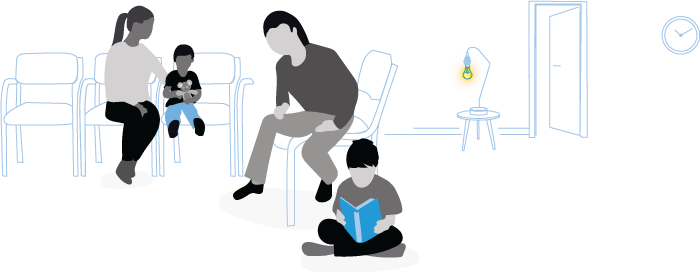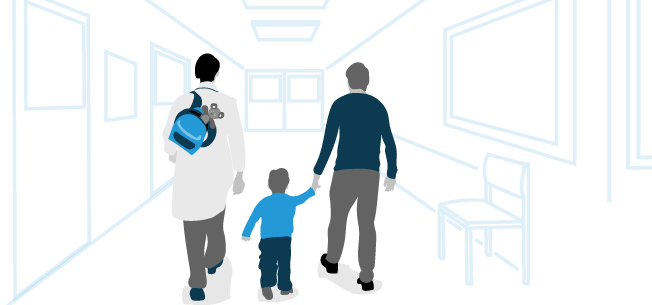
ELAPRASE risk profile
Risk of serious allergic reactions: Some patients have experienced serious allergic reactions, including anaphylactic reactions, during and up to 24 hours after an ELAPRASE infusion, regardless of how long they have been taking ELAPRASE.
Anaphylactic reactions are immediate and life-threatening allergic reactions. Anaphylactic reactions include breathing problems, low oxygen levels, low blood pressure, hives, and/or swelling of the throat or tongue. Inform your healthcare provider immediately if you notice the beginning of any of these symptoms.
Children with serious genetic mutations may be at higher risk for allergic reactions, serious side effects and antibody development compared with those with other types of mutation. Talk to your healthcare team about whether you/your child may be at risk.
Children with serious genetic mutations may be at higher risk for allergic reactions, serious side effects and antibody development compared with those with other types of mutation. Talk to your healthcare team about whether you/your child may be at risk.
Let your healthcare team know if you or the person you are caring for has breathing problems, a fever, or a respiratory illness prior to an ELAPRASE infusion, because they may be at risk of life-threatening worsening of respiratory conditions due to allergic reactions to ELAPRASE. Your healthcare team may decide to delay the ELAPRASE infusion.
Prior to an ELAPRASE infusion, let your healthcare team know if you or your child has breathing problems, other respiratory illnesses, heart problems, or susceptibility to fluid overload, because these patients may be at higher risk of fluid overload during ELAPRASE treatment. Confirm that your healthcare team is appropriately trained to watch for signs of fluid overload and provide the necessary medical support. Patients at risk for fluid overload may require longer observation time.
Adverse reactions
In all ELAPRASE clinical trials, the most common adverse reactions (side effects) requiring medical intervention were allergic (hypersensitivity) reactions and included rash, hives, itching, flushing, fever, and headache. The most frequent serious adverse reactions were episodes of insufficient oxygen supply, called hypoxia.
Read more about the warnings, precautions and possible adverse reactions for ELAPRASE in the Important Safety Information below and the Full Prescribing Information.
ELAPRASE safety profile
Adverse reactions reported since the approval of ELAPRASE
Late-emergent symptoms and signs of anaphylactic reactions have occurred up to 24 hours after initial treatment and recovery from an initial anaphylactic reaction. In addition, patients experienced repeated anaphylaxis over a two- to four- month period up to several years after initiating ELAPRASE treatment.
Serious adverse reactions that resulted in death included cardiorespiratory arrest, respiratory failure, respiratory distress, cardiac failure, and pneumonia.
Managing allergic reactions
The treatment center should have procedures and emergency preparations in place to prepare for possible allergic reactions to the ELAPRASE infusion, including serious allergic reactions, such as life-threatening anaphylactic reactions. Your healthcare team should be on hand to observe you or your child during and after the infusion. If anaphylactic or other acute reactions occur, the team should immediately discontinue the infusion of ELAPRASE and initiate appropriate medical treatment.
One way in which allergic reactions are often managed is slowing the speed at which ELAPRASE is infused or temporarily stopping the infusion. Therefore, the infusion may take longer if allergic reactions occur; however, infusion times should not exceed 8 hours.
Other possible treatments for allergic reactions include antihistamines or corticosteroids, given either before or during the ELAPRASE infusion. Treatments for anaphylactic reactions may also include inhaled beta-adrenergic agonists, oxygen, and vasopressors.
Read more about the warnings and precautions for ELAPRASE in the Important Safety Information below and the Full Prescribing Information.


